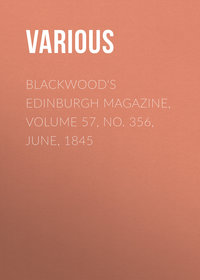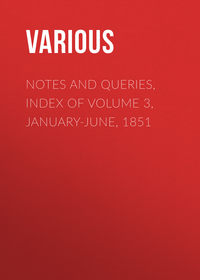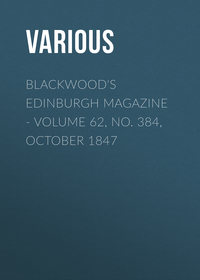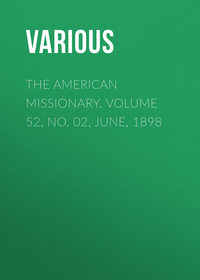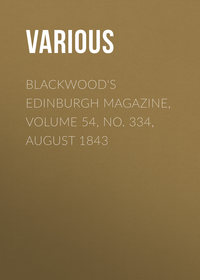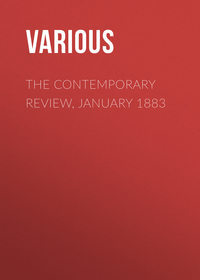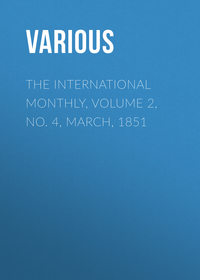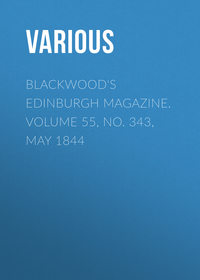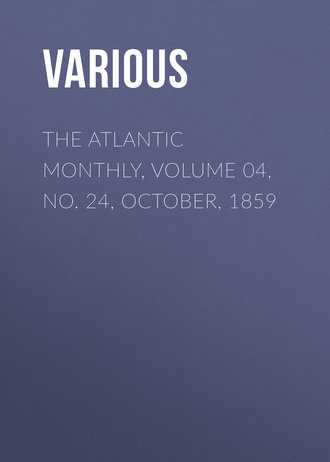 полная версия
полная версияThe Atlantic Monthly, Volume 04, No. 24, October, 1859
But he is now upon trial. Certain officers of the British Museum, among them men of high professional reputation and personal standing, men who occupy, and who confess that they occupy, "a judicial position" on such questions, charge, after careful investigation, that a great fraud has been committed in this folio; that its marginal readings, instead of being as old as they seem, and as Mr. Collier has asserted them to be, are modern fabrications, and that, consequently, Mr. Collier is either an impostor or a dupe. The charge is not a new one. The weight that it carries, and the impression that it has produced, are owing to the position of the men who make it, and the evidence which they have published in its support. It was made, however, six years ago,—but vaguely. For, although there was on every side a disposition to welcome with all heartiness the manuscript readings, the antiquity and value of which Mr. Collier had so positively announced, the poetic sense of the world recoiled from the mass of them when they appeared; and although a few, a very few, of the readings peculiar to this folio were accepted by Shakespearian editors and commentators, they were opposed as a whole with determination, and in one or two instances with unbecoming heat, by Mr. Collier's fellow-laborers. Prominent among these was Mr. Singer, a man of moderate capacity and undisciplined powers, but extensive reading in early English literature,—known, too, for the bitterness with which he habitually wrote. In opposing Mr. Collier's folio, he did not hesitate to insinuate broadly that he believed it to be an imposition. But as he based his suspicion solely upon the very numerous coincidences between the marginal readings in that volume and the conjectural readings of the editors and critics of the last century,—coincidences which, however, affect the character of a very large proportion of the noticeable changes in the folio,—he failed to accomplish his conservative purpose at the expense of Mr. Collier's reputation. But although this insinuation of the spurious character Of the writing in Mr. Collier's folio fell to the ground, such antiquity as would give its readings the consequence due to their having been introduced by a contemporary of Shakespeare was shown not to pertain to them, in the course of two articles which appeared in "Putnam's Magazine" for October and November, 1853, and which, it may be as well to say, were from the same hand that writes this reference to them. They effected this by exhibiting the corrector's ignorance of the meaning of words in common use twenty years after Shakespeare's death, and his introduction of stage directions which could not have been complied with until half a century after that event, and which were at variance with the very text itself to which they were applied. That the argument which they embodied was conclusive has been admitted by all the English editors and commentators, including even Mr. Collier himself. But this conclusion only brought down the date of these marginal readings to a period somewhat later than the Restoration of the British Monarchy, and it did not put in question the good faith either of their author or their discoverer.
The attack now made upon them is directed solely against their genuineness, and is based altogether upon external, or, we may properly say, physical evidence. The accusers are Mr. N.E.S.A. Hamilton, an assistant in the Manuscript Department of the British Museum, (whose chief, Sir Frederick Madden, the Keeper of that Department, is understood to support him,) and Mr. Nevil Story Maskelyne, Keeper of the Mineraloglcal Department. Of the alphabetical Mr. Hamilton we know something. He is one of the ablest palaeographists of his years in England, and the possessor of a pair of eyes of such microscopic powers that he can decipher manuscript which to ordinary sight seems obliterated by time, or even fire: a man of worth, too, as we hear, and one who has borne himself in this affair with mingled confidence and modesty. He says, that, of the corrections originally made on the margins of this folio, the number which have been wholly or partially "obliterated…..with a penknife or the employment of chymical agency" "are almost as numerous as those suffered to remain"; that, of the corrections allowed to stand, many have been "tampered with, touched up, or painted over, a modern character being dexterously altered, by touches of the pen, into a more antique form"; and that the margins are "covered with an infinite number of faint pencil-marks, in obedience to which the supposed old corrector has made his emendations"; and that these pencilled memorandums "have not even the pretence of antiquity in character or spelling, but are written in a bold hand of the present century"; and with regard to the incongruities of spelling, he especially mentions the instances, "'body,' 'offals,' in pencil, 'bodie,' 'offals,' in ink."
Mr. Maskelyne, having examined many of the margins of the folio with the microscope, confirms entirely the evidence of Mr. Hamilton's eyes. He found the pencilled memorandums "plentifully distributed down the margins," and "the particles of plumbago in the hollows of the paper" in every instance that he has examined. He found, also, that what seems to be ink is not ink, but "a paint, removable, with the exception of a slight stain, by mere water,"—which "paint, formed perhaps of sepia," would enable an impostor, it need hardly be observed, to simulate ink faded by time; and in several cases in which "the ink word, in a quaint, antique-looking writing, and the pencil word, in a modern-looking hand, occupy the same ground, and are one over the other," the pencil-marks being obscured or obliterated, Mr. Maskelyne found, on washing off the ink, that at first "the pencil-marks became much plainer than before, and even when as much of the ink-stain as possible was removed, the pencil still runs through the ink line in unbroken, even continuity." These points established, Mr. Maskelyne's conclusion, that in the examples which he tested "the pencil underlies the ink, that is to say, was antecedent to it in its date," is unavoidable. But does it follow upon this conclusion that the manuscript changes in the readings of this folio are of spurious and modern date,—made, for instance, within the last fifty years, and with the intention of deceiving the world as to their age? Perhaps; but, for reasons which we are about to give, we venture to think, not certainly.
First, however, as to the very delicate and unpleasant position in which Mr. Collier is placed by these discoveries. For, although the age of the manuscript readings of his folio must be fixed by that of the pencilled memorandums over which they are written, the question as to whether he has not been uncandid or unwise enough to suppress an important part of the truth in describing that volume is entirely independent of this problem in paleography. For these numberless partially erased pencilled memorandums, to which Mr. Collier has made no allusion whatever, must have been written upon the margins of that folio either before Mr. Collier bought it, in the spring of 1849, or since. If before, is it possible that he could have subjected it to "a most careful scrutiny" in 1850, that he could have studied it for three years for the purpose of preparing his "Notes and Emendations,"—an octavo volume of five hundred pages,—which appeared in 1853, and that after having, for various purposes, "often gone over the thousands of marks of all kinds" on its margins, he could again, after the lapse of three years more, have "reëxamined every line and letter" on those margins for the purpose of making the list of the readings which he published in 1856, without having discovered, in the course of all this close scrutiny, extending through so many years, the pencil-marks which at once became visible when the volume went to the British Museum? And if these pencil-marks, that underlie the simulated ink corrections, were made after the spring of 1849–! Here is a dilemma, either horn of which has a very ugly look.
But out of this trial we hope, nay, we confidently believe, that Mr. Collier will come unscathed. We hope it for the sake of the profession of literature,—for the sake of one who has been honorably known among men of letters for almost half a century, and who has borne into the vale of years a hitherto untarnished name. We believe it, because a contrary supposition would be entirely at variance with Mr. Collier's conduct about this folio ever since his first announcement of its discovery. It is true, that, in the course of the controversy which the publication of his "Notes and Emendations" inevitably brought upon him, Mr. Collier has not always shown that delicacy and consideration for candid opponents which he could have afforded to show, and which would have sat so gracefully upon him. It is true, that, in noticing, and, in his enthusiastic partiality, much exaggerating, the admissions of a volume in which, as he must have seen, he was first defended against Mr. Singer's repeated insinuations of forgery,15 and in availing himself again and again of those not always discreet admissions, he was uncourteous enough not to mention the name even of the work in question, not to say that of its author. It is true, that, on the appearance of an edition of Shakespeare's Works edited by the author of that volume, he hastened to accuse him publicly of misrepresentation, unwarily admitting at the same time that he did so upon a mere glance at the book, and before he had even "cut it open," and, in his haste, causing his accusation to recoil upon his own head.16 17 he abandoned one of the readings of his folio, ("she discourses, she craves," Merry Wives, I. 3,) which the same opponent had been the first to show not only untenable, but fatal to the authority and antiquity of the readings of that volume, he requited that opponent's defence of him by attributing his defeat on this point to an English editor, who only quoted the passage in question from "Shakespeare's Scholar," and with special mention of its authorship and its importance,18
Under the present circumstances, it may be well to let the reader see for himself exactly what Mr. Collier's course was in this little affair. Dr. Rimbault's note, published in 1856, is as follows:—
(–"her wrie little finger bewraies carving, etc.) The passage in the text sufficiently shows that carving was a sign of intelligence made with the little finger, as the glass was raised to the mouth. See the prefatory letter to Mr. R. G. White's Shakespeare's Scholar, 8vo., New York, 1854, p. xxxiii. Mr. Hunter (New Illustrations of Shakespeare, i. 215), Mr. Dyce (A Few Notes on Shakespeare, 1853, p. 18), and Mr. Mitford (Cursory Notes on Beaumont and Fletcher, etc., 1856, p. 40), were unacquainted with this valuable illustration of a Shakespearian word given by Overbury."
And yet Mr. Collier, with this note before him, as it will be seen, could write as follows:—
"The Rev. Mr. Dyce ('Few Notes,' p. 18) and the Rev. Mr. Hunter ('New Illustrations,' i. p. 215) both adduce quotations [as to 'carves'], but they have missed the most apposite, pointed out by Dr. Rimbault in his edition of Sir Thomas Overbury's Works, 8vo., 1856, p. 50."
The reader cannot estimate more lightly than we do the credit which Mr. Collier thought of consequence enough for him to do an unhandsome, not to say dishonorable, act to deprive an opponent of it. By referring to White's edition of Shakespeare, Vol. II. p. lx., another instance may be found of the same discourtesy on the part of Mr. Collier to Chalmers, with regard to a matter yet more trifling.] and that he thereby subjected himself self to open rebuke in his own country;[4] and he found, we suppose, his justification for this course in his seniority and his opponent's place of nativity. It is true, also, that, in the recently published edition of Shakespeare's Works, just alluded to, he has vengefully revived, in its worst form, the animosity which disgraced the pages of the editors and commentators of the last century, and has attacked the most eminent of critical English scholars, the Rev. Alexander Dyce, throughout that edition, bitterly and incessantly,[5] and also unfairly and upon forced occasion, as Mr. Dyce has conclusively shown, in a volume,[6] the appearance of which from the pen of a man of Mr. Dyce's character and position we yet cannot but deplore, great as the provocation was. Mr. Collier has done these things, which would not be tolerated among such men of letters in America as are also gentlemen; and he has also made statements about his folio which have been proved to be so inaccurate that it is clear that his memory is not to be trusted on that matter; but, in spite of all this, we neither will nor can believe, that, in his testimony as to the manner in which he became possessed of this celebrated volume, or in his description of its peculiarities, he has, with the intention to deceive, either suppressed the true or asserted the false. Since his first announcement of the discovery of the manuscript readings in that volume, he has had no concealments about it; he has shown it freely to the very persons who would be most likely to detect a literary imposition; he has told all, and more than all, that he could have been expected to tell about it; he has left no stone unturned in his endeavor to trace its history; and, after finally putting all of its manuscript readings upon record, and confessing frankly that he had been in error with regard to some of them, and that there are many of them which are "innovations,—changes which had crept in from time to time, [upon the stage,] to make sense out of difficult passages, but which do not represent the authentic text of Shakespeare," he gives the volume away to the Duke of Devonshire, the owner of one of the most celebrated dramatic libraries in England, on whose shelves he knew it would be almost as subject to close examination as on those of the British Museum. This is not the conduct of a literary forger in regard to the enduring witness of his forgery; and we may be sure, that, unless practice has made him reckless, and he is the very Merdle of Elizabethan scholarship, Mr. Collier has been in this matter as loyal as he has seemed to be.
But is the charge of forgery made out? It would seem that it is,—that the discovery of pencilled memorandums in a modern hand and in modern spelling, over which the readings in ink are written in an antique hand and antique spelling, leaves no doubt upon the question. Yet, assuming all that is charged at the British Museum to be established, we venture to withhold our assent from the conclusion of forgery against all the readings in question until the evidence in the case has been more thoroughly sifted. Our reasons we must state briefly; and they can as well be appreciated from a brief as a detailed statement.
And first, as to the "modern-looking hand" of the pencil-marks over which the "antique-looking writing" in ink is found. All the writing of even the early part of the seventeenth century was not done in the quaint, and, to us, strange and elaborate-seeming hand, sometimes called old chancery hand, specimens of which may be seen on the fac-simile published with Mr. Collier's "Notes and Emendations." This modern-looking hand, in which the pencil-marks appear, we venture to say may be that of a writer who lived long before the date (1632) of the volume on which his traces have been discovered, In support of this supposition, we might produce hundreds of instances within our reach. We must confine ourselves to one; and that, though somewhat more modern than others that we could produce, shall be from a volume easily accessible and well known to all Shakespearian scholars, and which naturally came before us in connection with our present subject. In Malone's "Inquiry, etc., into the Ireland Shakespeare Forgeries" (London: 8vo. 1796) are two fac-similes (Plate III.) of parts of letters from Shakespeare's friend, the Earl of Southampton. From the superscription to one of them, written in 1621 to the Lord-Keeper Williams, and preserved among the Harleian MSS., we give in fac-simile the following words:—
[Illustration: script text which reads "the right honorable"]
We select these words only because they happen to contain six of the letters most characteristic of the antique chancery hand of the seventeenth century,—t, h, e, r, g, and b,—within a space suited to the columns for which we write. The words themselves need none of ours added to them to set forth their modern look. They might have been written yesterday. The further to enforce our point, we add a fac-simile of some writing of forty years' later date. It is in a copy in our possession of Simon Lennard's translation of Charron "De la Sagesse," which (the translation) was not published until 1658. On an original fly-leaf, and evidently after the book had been subjected to some years' hard usage, an early possessor of the volume has entered his week's washing-account, in a hand of which the words following the date afford a fair specimen.
[Illustration: script text which is illegible]
Probably not many readers of the "Atlantic" can decipher the whole of this, although it is very neat, clear, and elegant. It is "Cloathes: 1. shirt";22 and if the reader23 will examine the fac-simile in Mr. Collier's "Notes and Emendations," he will find that it is even older in appearance than the marginal readings there given. Clearly, then, if the pencil memorandums on the margins of the Collier folio had been made by a person who wrote as the Earl of Southampton (born in 1573) did in the first quarter of the seventeenth century, and the ink readings were made to conform to them by a person who wrote as the profaner of Charron's "Wisdome" with his washing-bill did in the third quarter of that century, the pencilled guide would be "modern-looking," and the reading in ink written over it "antique-looking," although the former might have been half a century older than the latter. And that both pencil and ink readings are by the same hand remains to be proved. The presumption in our own mind is, that they are not. The margins of this folio, on the evidence of all who have examined it, Mr. Collier included, are full of proofs that there were many doubts and conjectures in the mind of its corrector, (shown by erasures, reinsertions, and change of manuscript readings,) before the work on it was abandoned; and is it not quite probable that some person who was or had been connected with the theatre made memoranda of such changes in the text as his memory suggested to him, and that these were passed upon (it is in evidence that some of them wore rejected) by the person who had undertaken to prepare the text for a new edition, or the performance of the plays by a new company? That even all the ink readings are by the same hand has not yet been established; and that the writing in pencil and that in ink are by one person is yet more uncertain. It is, in our opinion, more than doubtful. To assume it is to beg the question.
Next, as to the suspicious circumstance, that the pencil spelling is in some places modern, while that of the ink reading is old; as "body" in pencil, and "bodie" in ink. We wonder that such a fact was noticed by a man of Mr. Hamilton's knowledge; for it can be easily set aside; or rather, it need not be regarded, because there is nothing suspicious about it. For the spelling of the seventeenth century, like its syntax and its pronunciation, was irregular; and the fatal error of those who attempt to imitate it is that they always use double consonants, superfluous final e-s, and ie for y. And even supposing that these pencilled words and the words in ink were written by the same person, the fact that the word, when written in pencil, is spelled with a y or a single l, when written in ink with ie or double l, is of not the least consequence. This will be made clear to those who do not already know it, by the following instances (the like of which might be produced by tens of thousands,) from "Euphues his England," ed. 1597, which happened to lie on our table when we read Mr. Hamilton's first letter. "For that Honnie taken excessiuelie, cloyeth the stomacke though it be Honny." (Sig. Aa3.) In this instance, "honey," spelled first in the old way, as to the last vowel sound, on its repetition, in the same sentence, is spelled in what is called the new way; but in the example which follows, the word "folly," which appears first as a catchword at the bottom of the page in modern spelling, is found in the ancient spelling on the turning of the leaf: "Things that are commonlie knowne it were foll_y_ foll_ie_ to repeate." (Sig. Aa.) English scholars may smile at the citation of passages to establish such a point; but we are writing for those who are too wise to read old books, and who have their English study done, as the Turk would have had his dancing, by others for them. And besides, Mr. Hamilton has shown that even an English professor of antiquarian literature can forget the point, or at least not see its bearing on the subject in hand.
The modern-looking hand and the modern spelling of the pencilled memorandums do not, then, compel the conclusion that there has been forgery, even although they underlie the antique-looking hand and the old spelling; but let us see if there is not other evidence to be taken into consideration. We have before us the privately-printed fac-similes of the eighteen passages in Mr. Collier's folio, above referred to. Perhaps they may help us to judge if the corrector's work is like that of a forger. From the first we take these four lines [Tempest, Act I, Sc. 2];—"Lend thy hand And plueke my Magick garment from me: So [Sidenote: Lay it downe.] Lye there my Art: wipe thou thine eyes, have comfort, The direfull spectacle," etc.
In those lines, the corrector, beside supplying the stage direction Lay it downe, has added a comma after "hand," substituted a period for the colon after "Art," and a capital for a small w in "wipe." Would a forger do such minute and needless work as this, and do it so carelessly, too, as this one did? for, to make the colon a period, he merely strikes his pen lightly through the upper point; and, to make the small w a capital, he merely lengthens its lines upward.
In the passage from "The Taming of the Shrew," we see, what Mr. Collier himself notices in his "Notes and Emendations," that the prefix to the tinker's speeches, which in the folios is invariably Beg. [Beggar], is changed to Sly; and this is done in every instance. We have not counted Sly's speeches; but they are numerous enough to force the unanswerable question, With what possible purpose could this task have been undertaken by a forger? for the change adds nothing to our knowledge of the interlocutors, and produces no variation in the reading.
In a passage given from "The Winter's Tale," Act IV. Sc. 3, we find these lines:—
"Pol. This is the pettiest Low-borne Lasse, that ever,Ran on the greene-sord: Nothing she do's or seemes,"—where "seems" is changed to "says," by striking out all but the first and last letters, and writing ay in the margin. In a passage given from "Troilus and Cressida," Act V. Sc. 2, we have this line:—
"Good traders in the flesh, set this in your painted cloathes,"—where the a in the last word is struck out. In a speech of the Moor's, given from "Othello," Act IV. Sc. 1, we notice this sentence:—
"It is not words that shakes me thus, (pish)."where the final s is struck from "shakes." This is strange work for a forger of antique readings, a man who is supposed to be detected at his work by writing "bodie" in ink, when his pencil memorandum was "body." For, in these instances, he has modernized the text, and, except in the first, that is all that he has done. If he had wished his text to look old, he would have left the last e in "seemes," and read "sayes"; he would not have been at the trouble of striking out the a in "painted cloathes;"24 and he would have left the s in "shakes," which superfluity is one of the most marked and best-known characteristics of English books published before the middle of the seventeenth century. Instances of this kind, in which a forger would have defeated his own purpose to gain nothing, must be countless upon the nine hundred and odd pages of the Collier folio, of which the eighteen fac-similes, from which we have quoted, do not give us as much as would fill a single page of the original.


